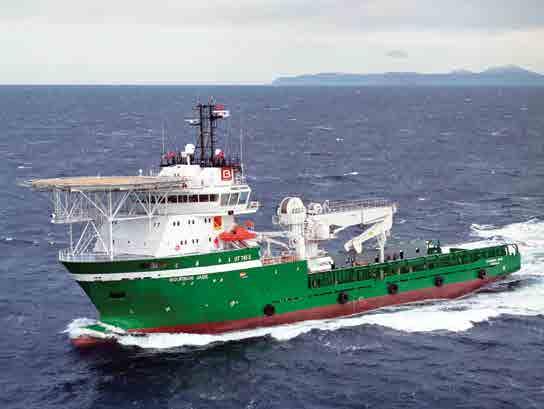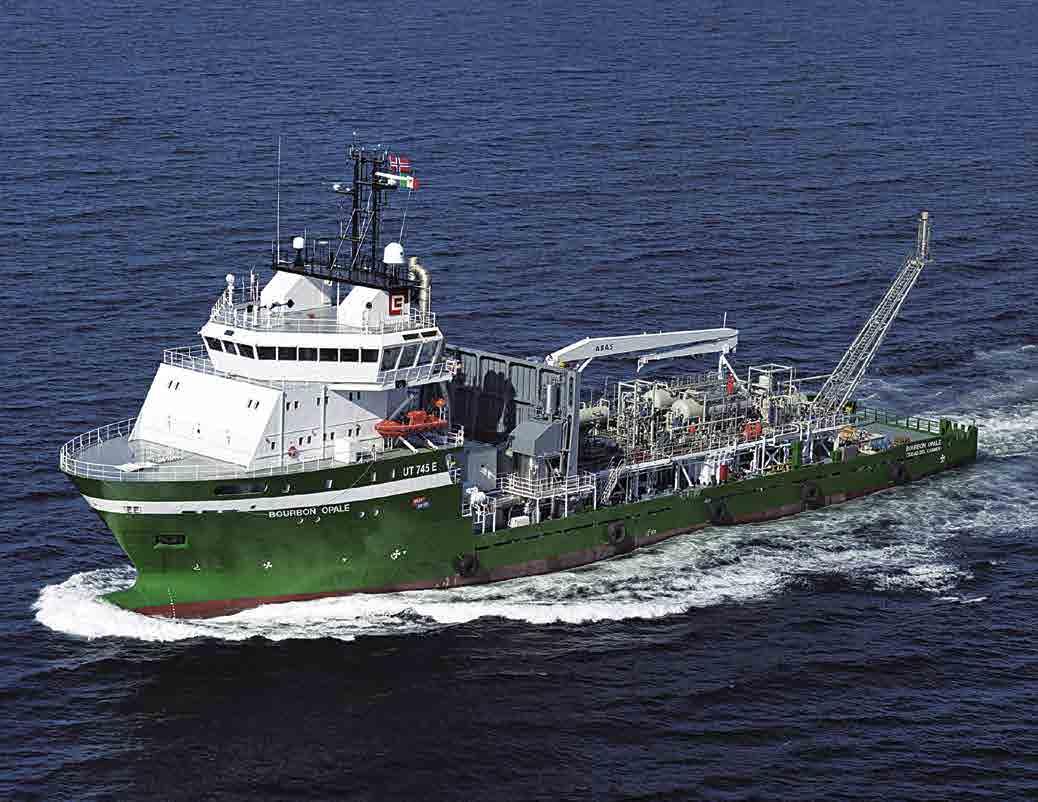
4 minute read
Offshore innovation Bourbon

OFFSHORE INNOVATION
Bourbon SA specialises in offshore oil and gas marine services and operates in the North Sea, the Gulf of Mexico, the west coast of Africa and many other regions of the world. In Subsea Services, Bourbon is playing a growing role in the development of offshore wind energy.


The French island of Réunion lies to the east of Madagascar and is a major exporter of sugar. The old name for the island is Île Bourbon. The Bourbon company, which was founded in 1948, began life on Réunion producing sugar and rum. After 1979, when Jacques de Chateauvieux became the chairman, Bourbon took a new course, gradually withdrawing from the sugar business as it came to focus on marine services.
Today Bourbon is based in Paris, with 8350 employees, 436 vessels and a presence in more than 30 countries worldwide. It provides offshore services both to international oil majors such as Exxon Mobil, Shell and Agip and to state-owned oil companies such as Petrobras and Saudi Aramco. The company separates its activities into two areas: Marine Services such as towing and anchoring drilling platforms; and Subsea Services, where its ships assist with inspection, repair and maintenance (IMR) in deep offshore oil fields. Innovative technology

As part of the energy mix, European countries want to develop sources of renewable energy, and Bourbon’s expertise supports the development of offshore wind farms. In the North Sea, the Bourbon Enterprise has assisted with the installation of undersea electric cables for the new Greater Gabbard wind farm off the Suffolk coast.
“As of June 2010, Bourbon has been operating in offshore wind with the Bourbon Enterprise,” stated Patrick Belenfant, senior vice-president of business management, Bourbon Subsea Services. “This IMR vessel (dedicated to inspection, maintenance and repair of subsea infrastructures), first intervened on the Greater Gabbard Wind Farm, one of the biggest offshore installation projects on the south coast of England, before joining the BARD Offshore 1 field off Germany.”
In recent years Bourbon has installed an innovative wind structures in the Atlantic for








the Portuguese utility company Energias de Portugal (EDP). The wind turbine, now in place near Aguçadoura, has a WindFloat foundation, meaning the structure could be assembled onshore before it was towed out to sea and anchored. The advantage of using floating structures is that there is no need to use heavy lifting equipment offshore. The WindFloat technology was developed by an American firm, Principle Power.
Expertise
Bourbon’s anchor handling tug supply vessel (AHTS), the Bourbon Liberty 228, towed the offshore wind turbine platform out to sea, put it into the right position and anchored it. Setting up a new offshore wind turbine is a specialist assignment, requiring the skills of both engineers and sailors. Fortunately, Bourbon is capable of adapting to specific client demands.
Bourbon’s range of services for the offshore wind sector is comprehensive, covering not only construction but also exploration and maintenance. Its IMR vessels are used in maintenance operations and also serve as floating hotels for employees working at a particular site. For exploration, the company has its own fleet of remotely operated underwater vehicles (ROVs). These subsea exploration robots are capable of making surveys of deep water and are equipped with advanced technology such as sonar and high-definition cameras.
2015 Leadership Strategy
Diversification into wind power is one of the aims of Bourbon’s plan for 2015, the ‘Bourbon 2015 Leadership Strategy’. Under the strategy, the company is to invest around $2 billion to build new offshore vessels. These investments will allow the company to replace obsolete vessels more quickly on the continental offshore market as well as to achieve growth in its deep offshore operations. In total, Bourbon plans to have 600 new-generation vessels by 2015. Alongside the expansion of its fleet, the company intends to take on more staff, and by 2015 there will be 12,000 people on the payroll. Recruitment at Bourbon is international and Bourbon has centres for training the crews in Marseille, Singapore, Manila, Ravenna and China.
The oil and gas industry has been using floating structures for many years, but in renewable energy the WindFloat support structure, which enables wind farms to be established far out to sea in deep water, represents a major breakthrough. Bourbon stands ready to take on more offshore wind power projects in the future. “Bourbon has been actively involved in work on several wind farms since 2010,” stated Bourbon’s CEO, Christian Lefèvre, “and a number of other projects are due to be rolled out over the next few years. Bourbon’s fleet is ideally suited to providing solutions for the installation and operation of wind farms. Wind is a promising complementary activity for our offshore oil and gas marine service offering.” n











